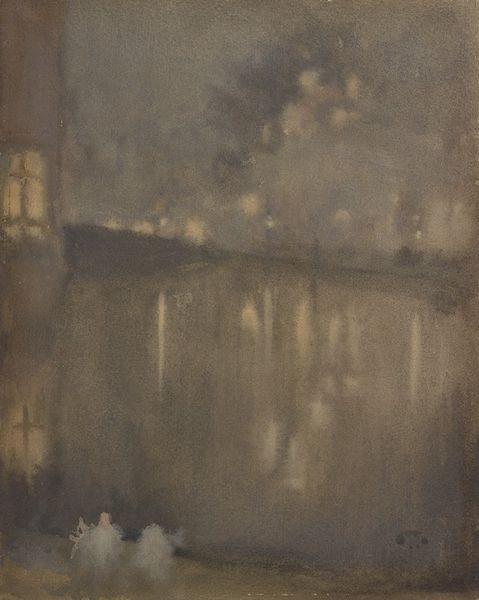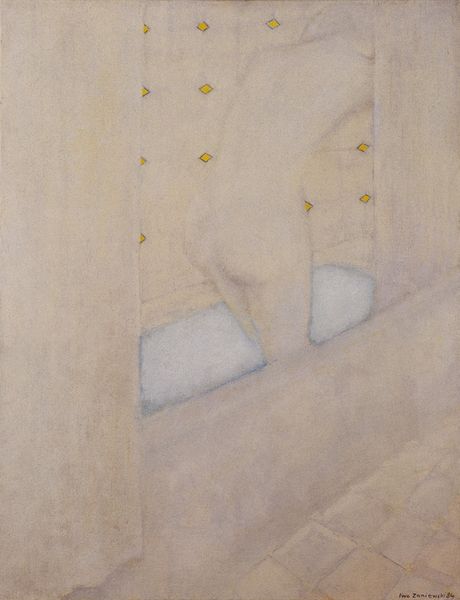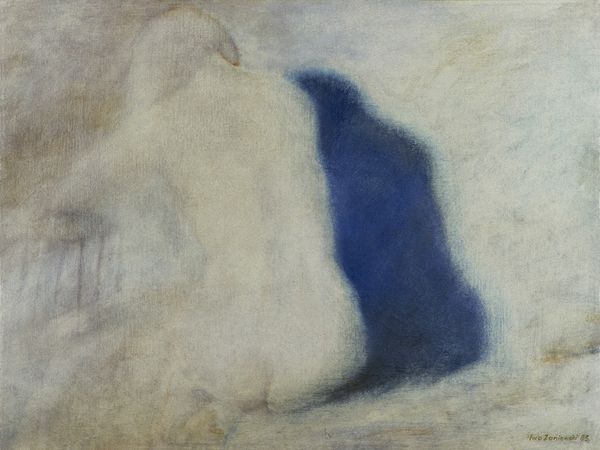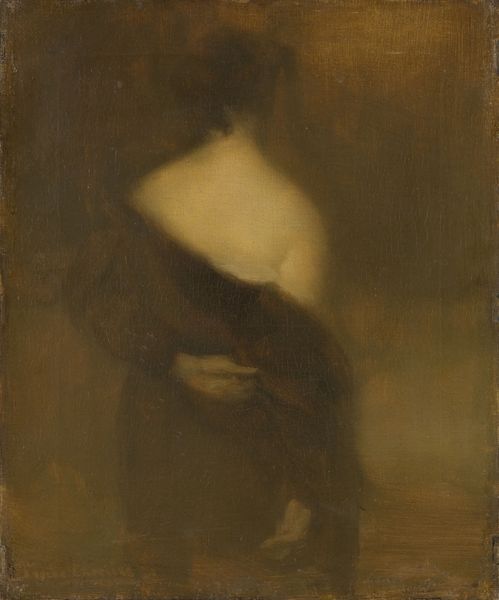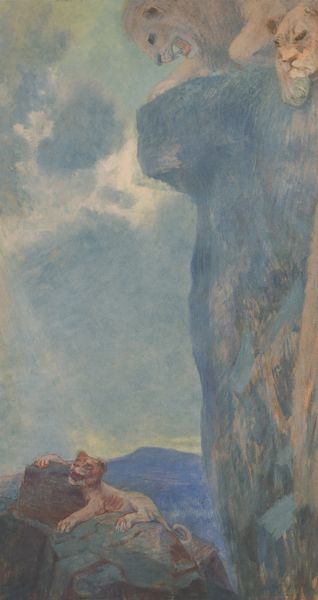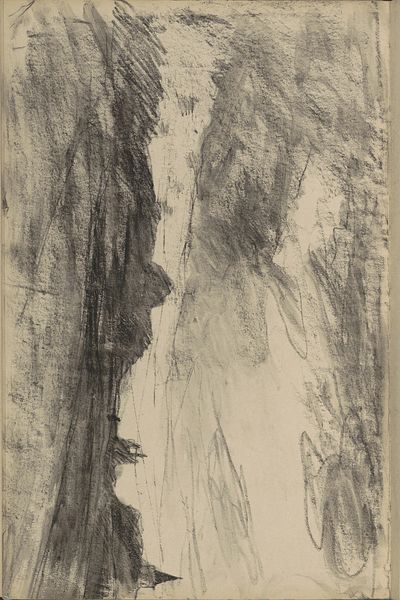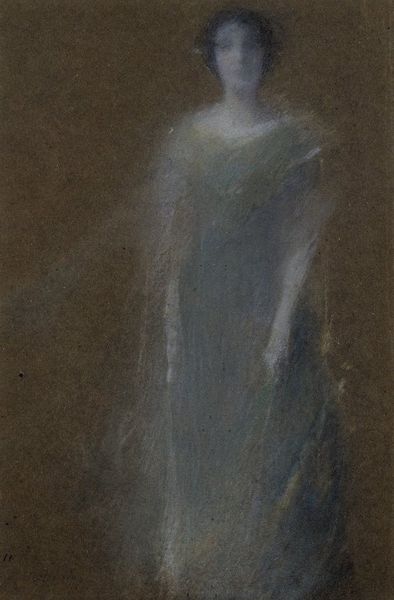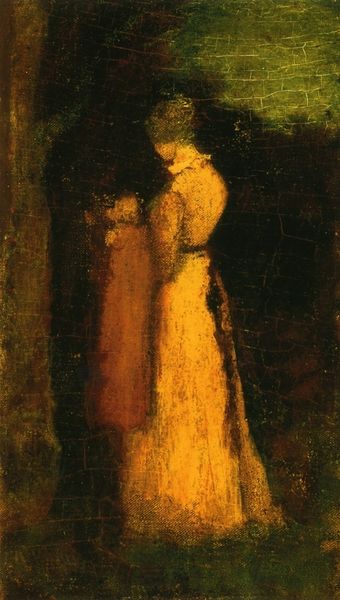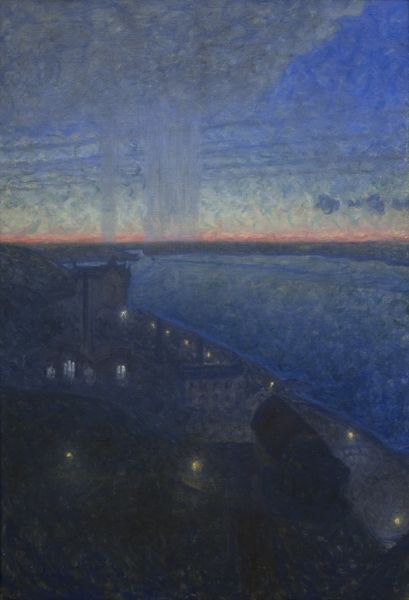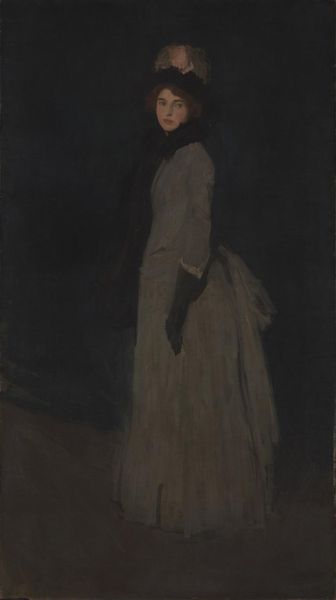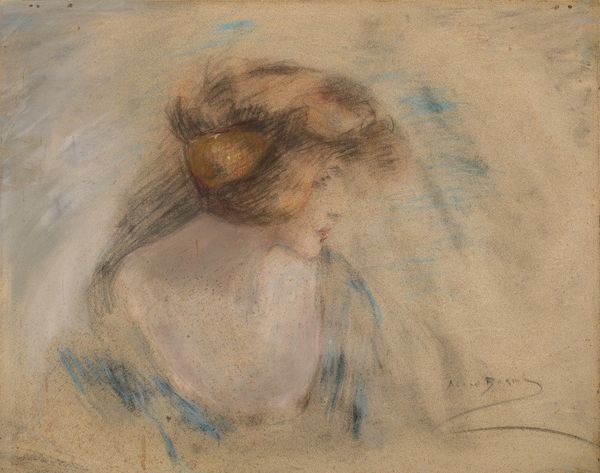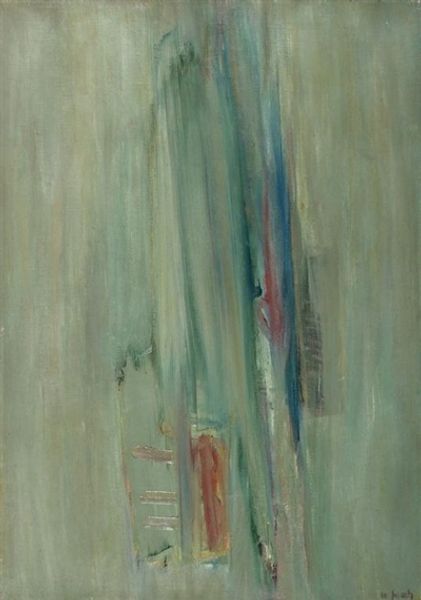
Copyright: Public domain
Curator: Immediately I’m struck by the feeling of profound stillness. A kind of heavy, almost melancholic quiet. What do you make of it? Editor: We're looking at "Rosenlundsgatan," painted by Eugène Jansson around 1895. It's an oil painting that offers a captivating perspective of Stockholm at twilight. What strikes me immediately is its modern feel; how urban development shaped experiences and social interactions at the end of the century. Curator: Twilight indeed – it’s almost entirely rendered in deep blues, purples, and shadowy greens. It lends the street and distant houses a dreamlike, symbolic quality. Do you think Jansson aimed to capture just the visible world here? Editor: Knowing a bit about Jansson, and his connections to modernist and symbolist movements, I’d argue it's much more than mere representation. It presents a perspective on urbanization, on its growing public spaces. The lights twinkling in the distance...they speak of public utilities becoming ubiquitous features. It seems that there is this push and pull of representing and making comment about the time and place, through subject matter. Curator: The solitary gas lamps reinforce this solitary air, guiding us through the darkened scene like beacons of subconscious longings or guiding figures in this changing time. It suggests a narrative without people, allowing viewers to inhabit a silent, psychological space. Editor: The lack of figures is really interesting when considering that Jansson often explored public spaces and homoerotic subcultures, so leaving those things out makes this image all the more striking, given its muted tones and vacant spaces. Did the space reflect the city at the time or something more personal, a certain state of mind of the artist himself, a questioning perhaps? Curator: Exactly! His artistic explorations tap into a collective mood of the time, a transitional period captured in potent symbols. You mention vacant spaces...the way the street curves invites a contemplative pause, right before leading the eye to an implied yet unseen destination. Editor: Yes, exactly the street is almost a stage setting for something about to happen. These elements seem more evocative than declarative, as if posing a question about modernity rather than stating its character. The city transforms as its representation becomes intertwined with an emotional landscape, with that psychological depth you're discussing. Curator: Ultimately, it's a testament to how public infrastructure shapes both urban experience and also personal emotional landscape. Jansson uses simple but rich visuals to express profound sentiment. Editor: Indeed. Seeing Jansson portray such an image really expands the perception and what one assumes of landscapes in general, especially those of growing metropolises and the social dynamics tied within them.
Comments
No comments
Be the first to comment and join the conversation on the ultimate creative platform.
